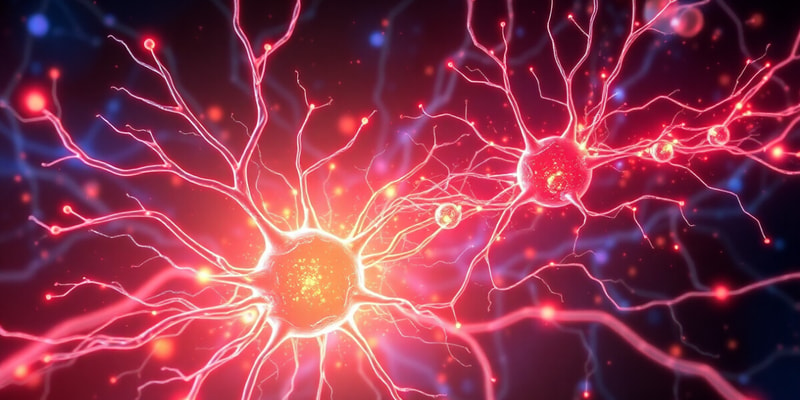Podcast
Questions and Answers
What is the main reason why action potentials do not travel back toward the cell body?
What is the main reason why action potentials do not travel back toward the cell body?
Why does an action potential move only toward the synaptic terminals along the axon?
Why does an action potential move only toward the synaptic terminals along the axon?
What defines the movement of a nerve impulse along the axon, likened to a cascade of events triggered by knocking over dominos?
What defines the movement of a nerve impulse along the axon, likened to a cascade of events triggered by knocking over dominos?
What happens to sodium channels immediately behind the traveling zone of depolarization during an action potential?
What happens to sodium channels immediately behind the traveling zone of depolarization during an action potential?
Signup and view all the answers
What triggers a new action potential after the refractory period is complete?
What triggers a new action potential after the refractory period is complete?
Signup and view all the answers
How does the frequency of action potentials convey information in a neuron?
How does the frequency of action potentials convey information in a neuron?
Signup and view all the answers
Why does an action potential move only toward the synaptic terminals along the axon?
Why does an action potential move only toward the synaptic terminals along the axon?
Signup and view all the answers
What makes an action potential an all-or-none event?
What makes an action potential an all-or-none event?
Signup and view all the answers
How do action potentials contribute to signal transmission between neurons?
How do action potentials contribute to signal transmission between neurons?
Signup and view all the answers
What is the primary reason behind the inability of action potentials to travel back toward the cell body?
What is the primary reason behind the inability of action potentials to travel back toward the cell body?
Signup and view all the answers
Why does the movement of a nerve impulse along the axon resemble a cascade of events triggered by knocking over dominos?
Why does the movement of a nerve impulse along the axon resemble a cascade of events triggered by knocking over dominos?
Signup and view all the answers
What role does the refractory period play in ensuring unidirectional action potential propagation?
What role does the refractory period play in ensuring unidirectional action potential propagation?
Signup and view all the answers



